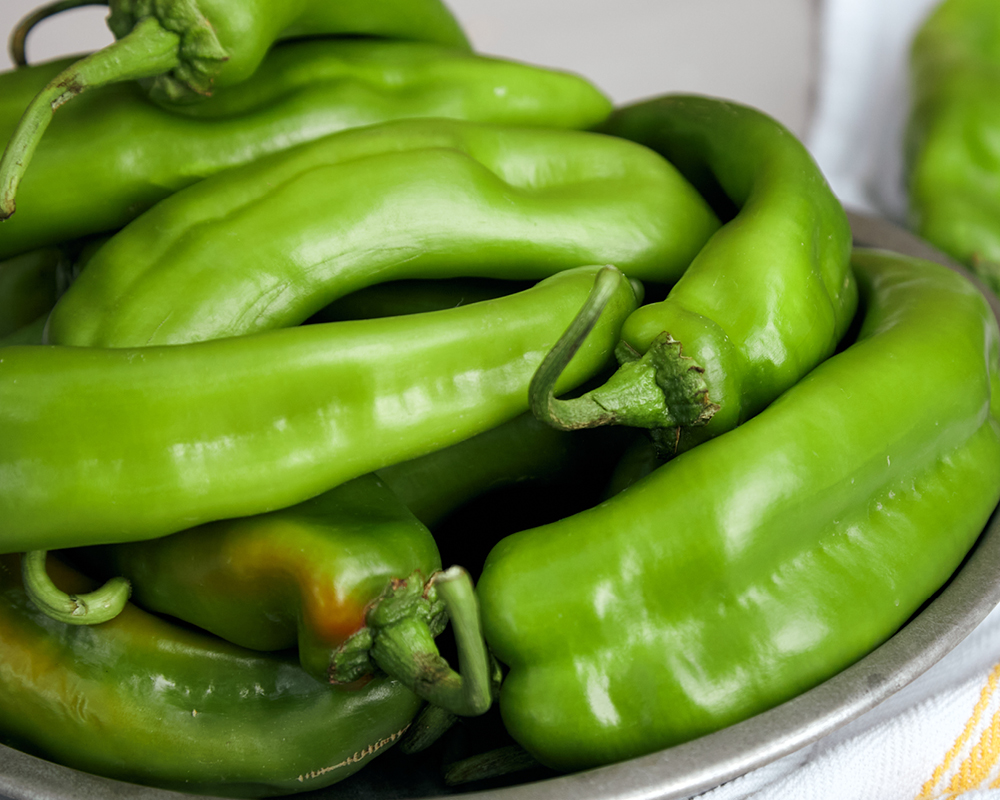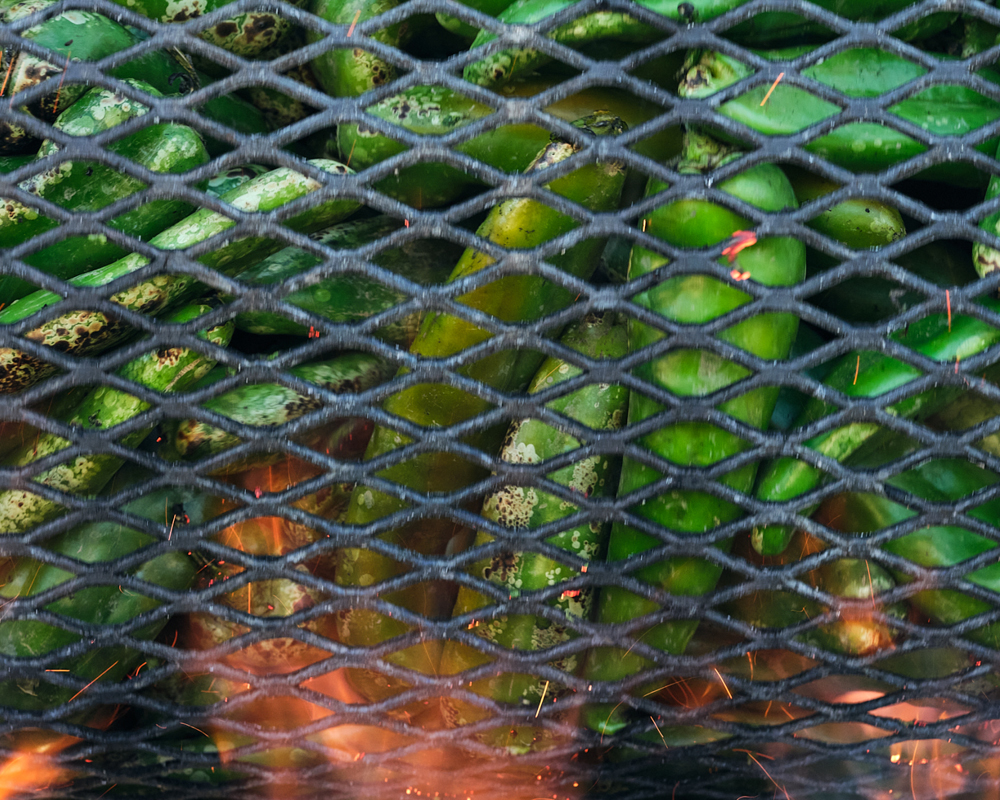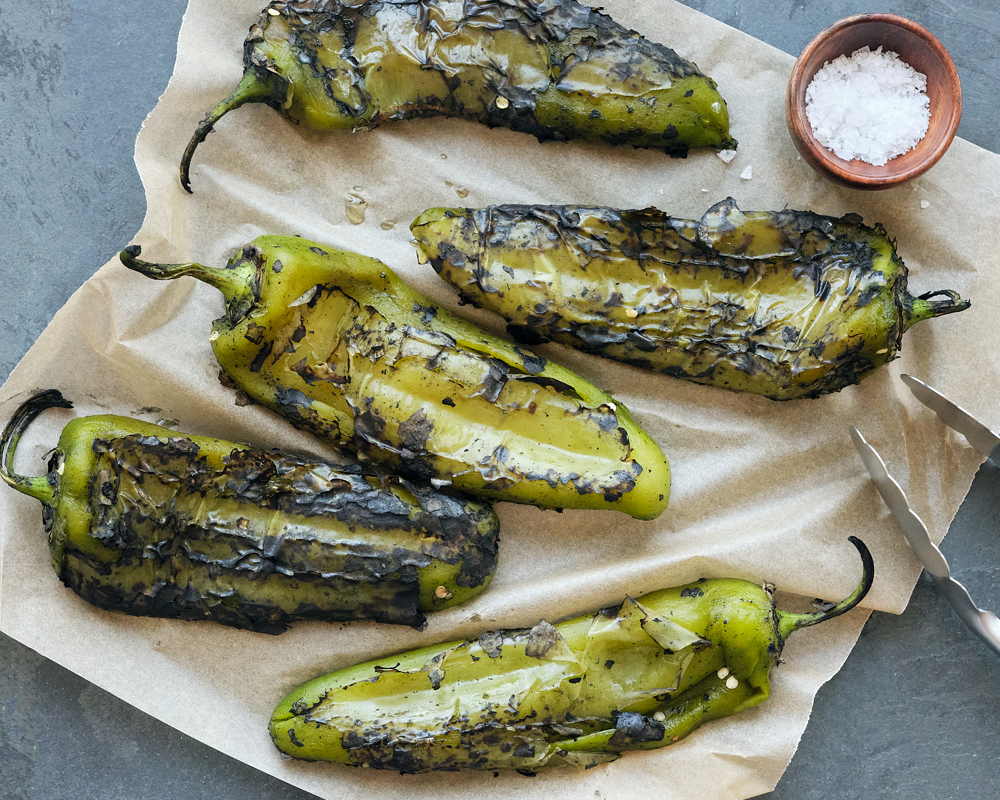
I guarantee you’ve never met a group of people more passionate about produce than New Mexicans are about Hatch chiles. Every August, people from all over the state embark on a gastronomic pilgrimage to the Hatch Valley, aka the Chile Capital of the World. There, they buy fresh chiles by the truckload, often taking home 20, 30, even 40 pounds or more to roast and freeze for use through the winter. And one thing’s for certain: they’ll devour every last fiery bite.
Hatch chiles are a cornerstone of the Southwest diet, adding an irresistible smoky-spicy quality to just about any recipe. In New Mexico, it’s practically a cardinal sin for a restaurant not to feature Hatch chiles in at least 5 dishes on the menu. Locals toss these buttery, succulent chiles on burgers, simmer them into stews, and even bake them into cornbread. The possibilities are endless—and smoldering with flavor.
Luckily, you don’t have to travel all the way to New Mexico to experience peak-season Hatch chiles. Right here in our Washington stores, we offer mild, medium, hot, and extra hot varieties. Think you can handle the heat? Read on to discover why a Hatch is the best chile you’ll ever eat.

Scorching Southwest Origins
What makes Hatch chiles so spectacular? To put it simply, Napa is to grapes what the Hatch Valley is to chiles. This area was once a floodplain of the Rio Grande, so the soil is exceptionally nutrient-rich. It’s the land itself that infuses each chile with its signature well-rounded, deeply flavorful character.
It’s worth clarifying that “Hatch” isn’t a chile variety—it just refers to the region where they grow. A pepper cultivated outside of this area cannot tout the title of “Hatch.” Varieties like Anaheim, Big Jim, and College can all be Hatch chiles—if grown there.
Harvest season in New Mexico is both a culinary and community celebration, a sensory spectacle that’s a feast for the eyes as much as the belly. Cylindrical roasters tumble over open flames, charring chiles to perfection. Hanging ristras (vibrant strings of dried chiles) adorn doorways like bursting confetti. It’s a lively, special tradition that lasts a fleeting 6 weeks in August and September. So, savor the pepper party while it’s on!
The Spice is Right
Ready for a hot take? Hatch chiles are hot, but not burn-your-mouth unbearable. Their spice level is on par with jalapeños, which clock in between 2,500 and 8,000 Scoville heat units (SHUs). Hatch chiles span a slightly wider range of 1,000 to 8,000 SHUs—an enjoyable medium heat ranking. But if black pepper makes you sweat, it might be wise to stick to the milder end of the Hatch spectrum.
A common misconception is that chile seeds are the source of the heat. In truth, it’s the veins that you can thank for their tongue-tingling sensation (or blame, depending on your tolerance). These veins, or ribs, contain capsaicin, the compound responsible for packing that fiery punch. Oddly enough, capsaicin signals to your brain to release endorphins, triggering a happy rush of euphoria. No wonder spicy food can be so addictive!
Want a preview of how hot your chile might be? Take a look at the inner walls. The darker yellow-orange the veins, the spicier the chile will be. It’s a simple visual cue that just might save your taste buds.

Roast and Stash Your Hatch
Roasting is the go-to way to prepare Hatch chiles—it brings out their earthy, sweet, smoky side. You can grab pre-roasted chiles in-store or put on your apron and roast them yourself at home. If you go the DIY route, aim for a deep, blackened char. Broiling each side for 5-7 minutes should do the trick. Once they’re blistered and fragrant, let them cool for a minute and peel off the skin with a gentle tug. (Pro tip: Wear gloves! Capsaicin isn’t kind to bare skin or eyes.)
Want to make the most of your roast? Chill your chiles as quickly as possible—ideally within two hours of cooking—to keep bacteria and mold at bay. You can either freeze whole roasted chiles or flash freeze chopped chiles in small portions (4-8 oz) on a parchment-lined tray before transferring to a bigger bag for long-term storage. For easy future use, place your chiles in a single layer so they don’t clump together in the freezer, and try to get as much air out of the bag as possible to fend off freezer burn. Properly stored chiles will last up to 6 months, ready to fire up meals on a whim.

Recipes with a Kick
Hatch chiles are the chameleons of the chile world, seamlessly blending into all kinds of dishes. Dedicated fans will put them in everything from tamales to stews and even desserts. For something quick and simple, toss your chiles in with scrambled eggs or load them up with cream cheese to temper the heat (think a Hatch-ified jalapeño popper). If you’re in the mood for something more elaborate, give them a try in our Hatch Chile Cornbread, Chorizo-Stuffed Hatch Chile Peppers, or Grilled Shrimp and Hatch Chile Tostada.
Not in the mood to cook? We offer several ready-to-eat Hatch chile goodies—your shortcut to spicy satisfaction:
Hatch Chile Guacamole: Made fresh daily by our produce team
Los Roast Hatch Salsa: A scorching salsa by a New Mexican company, found in the canned foods aisle
Corn or Chicken Hatch Chile Quesadilla: Order from the prepared foods service counter
Henning’s Hatch Chile Cheddar: Creamy Hatch flavor sans the heat, found in the cheese department
Feeling Hot, Hot, Hot!
Whether you’re team mild or extra hot, we hope you’ll find a new way to enjoy this beloved seasonal sensation. And remember, the dairy aisle is always there should you need it!

